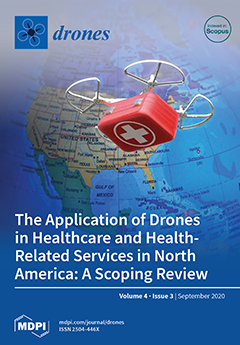Geospatial crop water use mapping is critical for field-scale site-specific irrigation management. Landsat 7/8 satellite imagery with a widely adopted METRIC (Mapping Evapotranspiration at high Resolution with Internalized Calibration) energy balance model (LM approach) estimates accurate evapotranspiration (ET) but limits field-scale spatiotemporal (30 m pixel
−1, ~16 days) mapping. A study was therefore conducted to map actual ET of commercially grown irrigated-field crops (spearmint, potato, and alfalfa) at very high-resolution (7 cm pixel
−1). Six small unmanned aerial system (UAS)-based multispectral and thermal infrared imagery campaigns were conducted (two for each crop) at the same time as the Landsat 7/8 overpass. Three variants of METRIC model were used to process the UAS imagery; UAS-METRIC-1, -2, and -3 (UASM-1, -2, and -3) and outputs were compared with the standard LM approach. ET root mean square differences (RMSD) between LM-UASM-1, LM-UASM-2, and LM-UASM-3 were in the ranges of 0.2–2.9, 0.5–0.9, and 0.5–2.7 mm day
−1, respectively. Internal calibrations and sensible heat fluxes majorly resulted in such differences. UASM-2 had the highest similarity with the LM approach (RMSD: 0.5–0.9, ET
dep,abs (daily ET departures): 2–14%,
r (Pearson correlation coefficient) = 0.91). Strong ET correlations between UASM and LM approaches (0.7–0.8, 0.7–0.8, and 0.8–0.9 for spearmint, potato, and alfalfa crops) suggest equal suitability of UASM approaches as LM to map ET for a range of similar crops. UASM approaches (Coefficient of variation, CV: 6.7–24.3%) however outperformed the LM approach (CV: 2.1–11.2%) in mapping spatial ET variations due to large number of pixels. On-demand UAS imagery may thus help in deriving high resolution site-specific ET maps, for growers to aid in timely crop water management.
Full article





